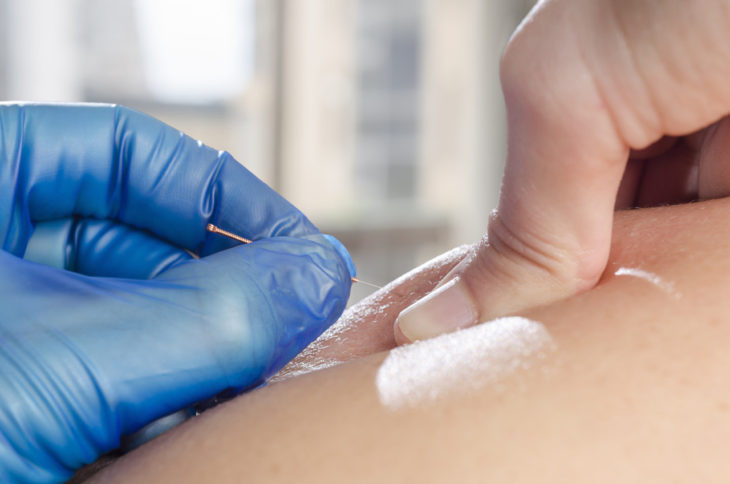
Dry Needling for Orthopedic Injuries
Dry needling is a technique used by physical therapists to aid in the treatment and healing of some injuries. It is a fairly new and modern, evidence-based intervention for the treatment of pain and dysfunction in musculoskeletal conditions such as neck pain, shoulder impingement, tennis elbow, headaches, knee pain, plantar fasciitis, and low back pain, to name a few. This type of therapy works by inserting very thin needles into myofascial trigger points, or painful spots in a tight band of muscle, which aids in releasing or relaxing the area.
Often times, patients wonder what the difference is between dry needling and acupuncture. Acupuncture has been around for hundreds of years and is based in Eastern Medicine. It focuses on altering the flow of energy or “Chi” along traditional Chinese meridians or acupuncture points for the treatment of diseases. Dry needling is a newer technique and it based in Western Medicine. It is used by physical therapists and sports medicine practitioners to treat orthopedic injuries and it is specifically focused on releasing muscle tension via the nervous system.
There are many benefits to dry needling. It can:
- Relieve muscle pain and tightness
- Improve mobility and flexibility
- Alleviate chronic pain
- Improve blood flow and circulation.
While individuals may require multiple treatments to maximize their outcomes, many patients experience improvement in just 24-48 hours.
Dry needling is very safe and utilizes sterile needles that are never reused. Drowsiness, tiredness or dizziness may occur after treatment in a small number of patients (1-3%). Minor bleeding or bruising may occur and is considered very normal (15-20%). Temporary pain during dry needling occurs in 60-70% of treatments and may last 24-48 hours, often referred to as “needle soreness.”
Preparing for dry needling therapy
Often times dry needling can be an adjunct to your physical therapy session if your therapist feels it could be of benefit to your healing. You can expect that a dry needling session can take between 10 to 30 minutes. Prior to your first session, it is important to let your Physical Therapist know if you’ve ever fainted or experienced a seizure. They will also want to know if you have a pacemaker, other electrical implants, or if you are taking any blood thinning medications or antibiotics for an infection. Lastly, please inform your Therapist if you have any metal allergies. It is also helpful to eat prior and drink plenty of water before and after a dry needling session.